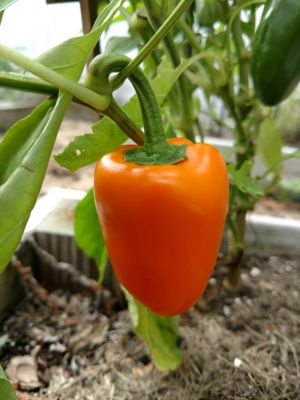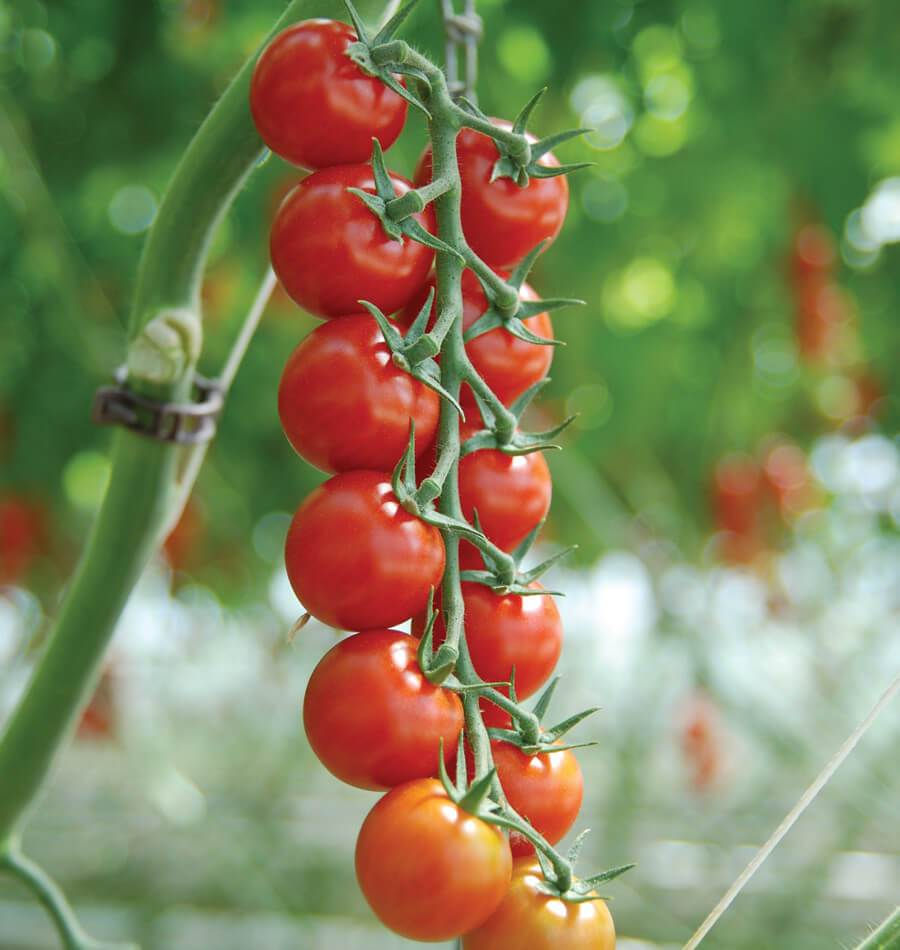The red bell pepper (Capsicum annum) is the fully ripened fruit of the sweet pepper plant, belonging to the Solanaceae family. It is one of the most popular and widely consumed bell pepper varieties, prized for its very sweet flavor and vibrant color.
Characteristics
- Shape: Typically blocky or square, with four distinct lobes. Its regular shape makes it ideal for stuffing.
- Size: Medium to large, typically ranging from 8 to 15 cm (3 to 6 inches) in length.
- Skin: Smooth, glossy, and a deep, intense red color when ripe. The skin is edible and relatively thin.
- Flesh: Thick, very crisp, juicy, and bright red.
- Flavor: This is the sweetest and mildest variety among all bell pepper colors. Its taste is rich, fruity, and completely free of bitterness or heat.
Main Culinary Uses
Red bell peppers are incredibly versatile in the kitchen, adding flavor, color, and texture to a multitude of dishes:
- Raw: Excellent in salads, sliced into sticks for crudité platters, in sandwiches, or as a decorative garnish. Its sweetness makes it very pleasant to eat raw.
- Cooked:
- Sautéed or Grilled: Its sweet flavor intensifies and it caramelizes slightly, making it an excellent addition to fajitas, kebabs, stir-fries, or grilled vegetables.
- Roasted: Once roasted in the oven or over an open flame, red bell peppers become tender and their skin peels off easily. They are then perfect for purées, soups (like red gazpacho), sauces (like bell pepper coulis), or side dishes.
- Stuffed: Their size and shape make them ideal candidates for stuffing with rice, meat, vegetables, or cheese.
- In Sauces and Stews: Their thick flesh and deep flavor enrich tomato sauces, stews, slow-cooked dishes, and soups.
Nutritional Benefits
Red bell peppers are a true nutritional powerhouse, packed with vitamins and antioxidants:
- Extremely Rich in Vitamin C: They are one of the best sources of vitamin C, far more than citrus fruits. Vitamin C is a powerful antioxidant essential for the immune system, skin health, and collagen formation.
- Excellent Source of Vitamin A (Beta-carotene): Their red color is due to a high concentration of beta-carotene, a precursor to vitamin A, crucial for vision, cell growth, and immune function.
- Contains Vitamin B6 and B9 (Folate): These B vitamins are important for energy metabolism and cardiovascular health.
- Rich in Antioxidants: Besides vitamins C and A, they contain other antioxidants like lycopene (which gives them their deep red color) and various flavonoids, which help protect body cells from damage.
- Low in Calories and High in Fiber: They are a light vegetable that contributes to satiety and good digestion.
Seasonality and Storage
- Season: While red bell peppers are primarily a summer and early autumn vegetable when field-grown, they are available year-round thanks to greenhouse cultivation.
- Storage: They store very well in the refrigerator, in the crisper drawer, for a good week or even longer. They can also be chopped and frozen for later use in cooked dishes.
Red pepper
C$5.25 Regular Price
C$4.73Sale Price
*Seedlings of 14 weeks ready for transplantation.*





